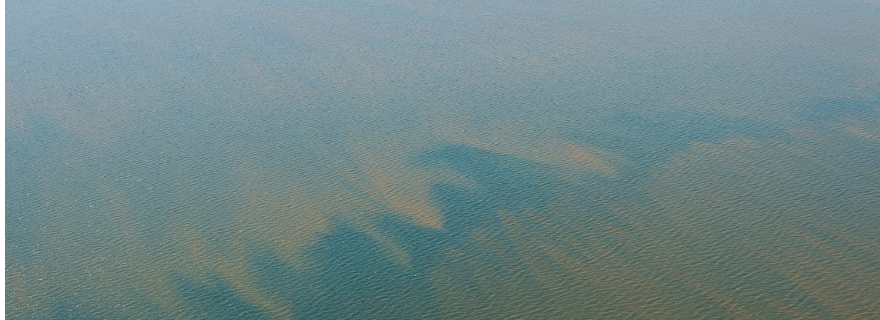 Could large-scale oyster bar or clam restoration change the tide in Old Tampa Bay?
Could large-scale oyster bar or clam restoration change the tide in Old Tampa Bay?
Almost every summer since 2000, an alga named Pyrodinium has stained Old Tampa Bay with a reddish hue. Similar to Florida Red Tide (Karenia brevis) currently threatening Pinellas beaches, Pyrodinium produces potent toxins that can pose a health risk to humans and wildlife if consumed. Pyrodinium also reduces clarity in the water and can cause fish kills as it biodegrades and depletes dissolved oxygen.
A new study underway now by the Florida Fish and Wildlife Research Institute (FWRI), funded through the Tampa Bay Estuary Program, is looking at the potential for native shellfish to filter the pervasive algae as a way to control the bloom.
Early results are encouraging, says FWRI researcher Cary Lopez, because they suggest that oysters and clams could potentially filter Pyrodinium fast enough to mitigate bloom development — if the shellfish are abundant enough.
Like Red Tide, many questions remain about Pyrodinium but researchers are unravelling details that make natural control of the bloom a possibility. Much has been learned about its life cycle in recent years. Its growth rate is strongly influenced by warm temperatures, and at the end of the summer bloom, it deposits resting cysts—which can be likened to seeds in plants—that overwinter in the sediment and germinate the following year.
Researchers also have determined the rate at which Pyrodinium grows – as well as the potential rate at which populations of oysters or clams could filter the algae.
Although large-scale testing is still years away, theoretically a moderate to dense population of adult oysters could filter overlying water containing Pyrodinium in about two days, Lopez said, which is faster than the anticipated rate of Pyrodinium population growth.
So far, the tests have been conducted in laboratory experiments rather than real-world settings, Lopez adds, and additional lab tests are planned before conducting large-scale experiments. Those additional studies would look at other species of shellfish and the viability of Pyrodinium cells found in shellfish feces. They also would look at the algae’s patterns of vertical movement in the water, which might lead to algal cells not being eaten if the shellfish are on the bottom of the bay but algae are swimming toward sunlight at the water surface.
Pyrodinium is actually quite toxic to human beings and has caused more fatalities worldwide than any other toxic algae, notes Sugandha Shankar, the FWRI researcher working with Lopez. Closer to home, they’ve been implicated in large-scale fish kills due to depleted oxygen and, over a decade ago, in cases of human illness related to saxitoxins in pufferfish from the Indian River Lagoon. Oysters and other filter feeders exposed to high levels of Pyrodinium can be toxic to humans who eat them.
“This was a pilot study, so we didn’t focus on toxins, but we know that the more Pyrodinium cells a clam or oyster filters, the more toxic it becomes,” she said. “The shellfish may, however, biotransform the most toxic compound – called saxitoxin — into less deadly compounds over time and we are interested in looking at how quickly this might happen in the different shellfish species.”
Lopez, Shankar and Ed Sherwood, director of the Tampa Bay Estuary Program, are hopeful that the ongoing studies could result in strategically placed oyster rafts that filter Pyrodinium faster than it grows. If successful, such oyster rafts could provide multiple benefits for Old Tampa Bay, including improved water quality in one of the most impacted areas of the bay.
Learn more about efforts to clear Old Tampa Bay at http://baysoundings.com/tampa-bays-problem-child-gets-extra-attention/
By Victoria Parsons, originally published 10/18/2018
